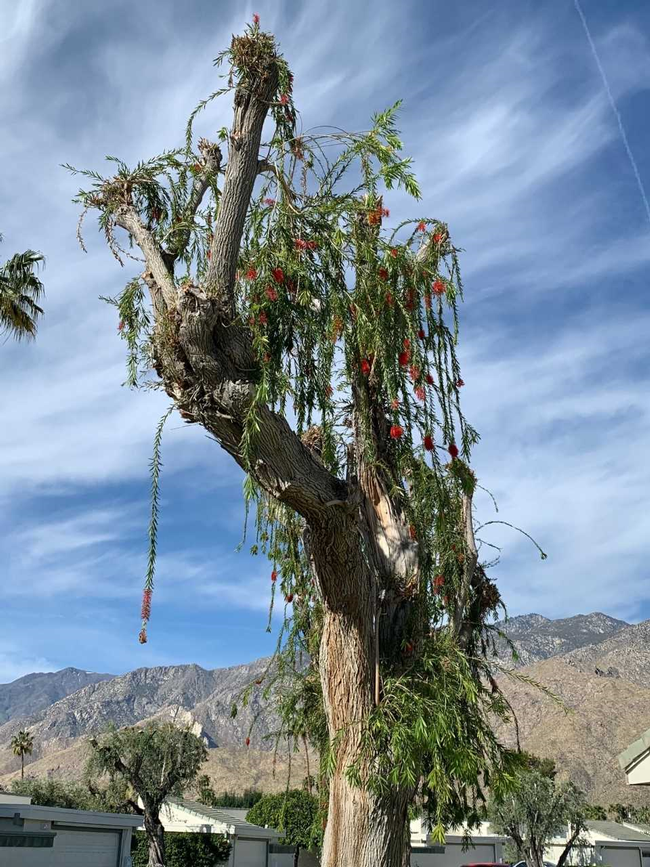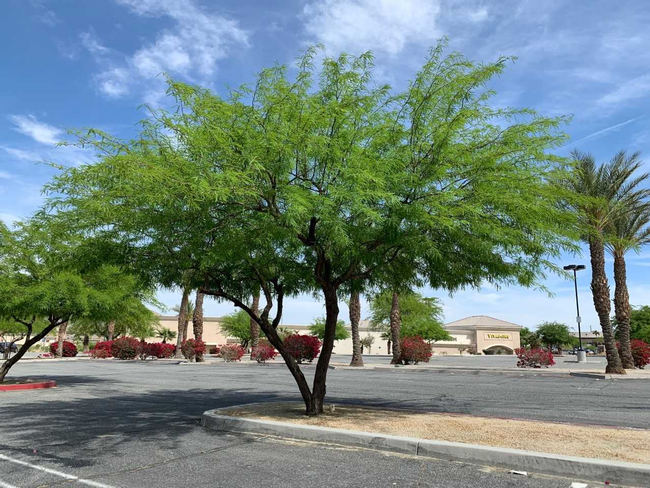Topping a tree is the process of giving a tree a virtual crewcut by making one or more horizontal cuts across the top of the tree (see photos below) to shorten it. Why is topping trees harmful? Topping trees results in unstable, unsafe, and unattractive trees. It also reduces the ability for trees to reduce high temperatures and provide adequate shade in urban heat islands, sequester (store) carbon produced by fossil fuels, and provide wildlife habitat.
In some cases, trees are topped because a tall tree that should not have been selected in the first place is growing into utility lines. In other cases, topping occurs due to a lack of knowledge about the dangers of topping and/or simply wanting to save money by going with the lowest bid. In all cases, topping should be avoided. The combination of improper balance and weak, poor-quality growth following topping creates a much higher likelihood of personal injury and property damage than occurs from properly pruned trees. (Top photo below: topped tree; Bottom photo below: untopped tree.)
Trees should be properly thinned and pruned rather than topped. Proper pruning involves maintaining the natural integrity and balance of the tree. Often this entails selecting a central leader and removing competing leaders, removing crossed branches, water sprouts, suckers and deadwood. In all cases proper pruning maintains the correct balance of weight and foliage in the upper, middle, and lower portion of the tree. (For more detailed information on proper pruning visit the International Society of Arboriculture's (ISA) consumer website: www.treesaregood.org). It may be useful to contact a Certified Arborist who is trained in tree health and care if you are in doubt about caring for your landscape trees. S/he will determine the proper pruning and thinning procedures and otherwise assess the overall health of your tree. Consult the ISA website for a Certified Arborist near you: https://www.isa-arbor.com/Credentials.
There are also several reliable and useful search engines to help you select the right tree for the right location. These user-friendly sites allow you to include several criteria in your search such as tree type (deciduous or evergreen), flower color, ultimate size, drought tolerance, pest resistance, and ability to attract pollinators among others. Grab a cub of java or tea and enjoy perusing such informative sites as: Urban Forest Ecosystems Institutes (https://selectree.calpoly.edu/); California Native Plant Society (https://calflora.org/); and UC's California Center for Urban Horticulture Water Use Classification of Landscape Species (WUCOLS) (https://ccuh.ucdavis.edu/wucols-iv).
Do you have a home garden or landscape question? Contact a trained UC Master Gardener volunteer serving your county using this link: http://mg.ucanr.edu/FindUs/. San Bernardino MGs may be reached at mgsanbern@ucanr.edu or (909)387-2182.
Attached Images:

